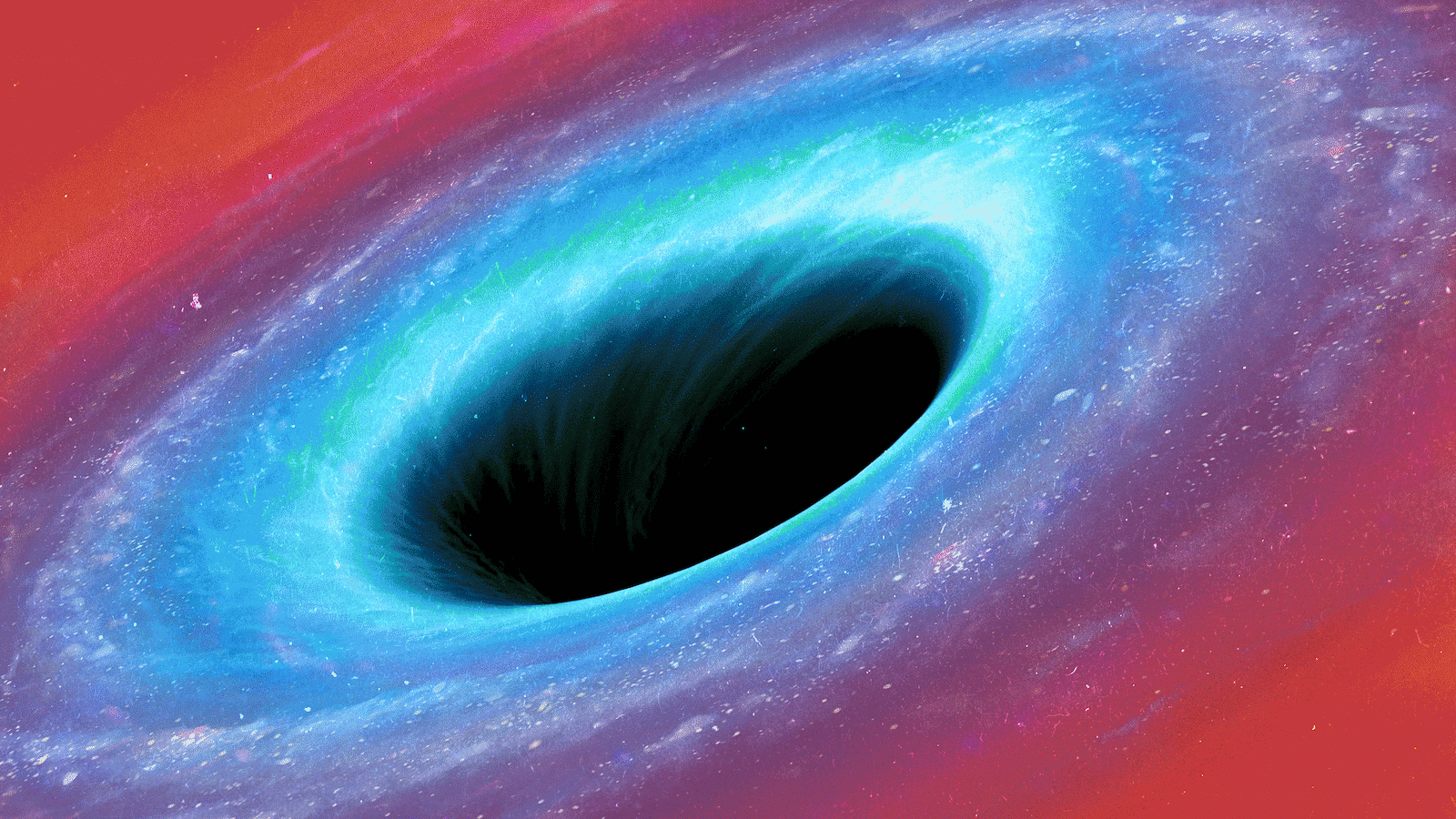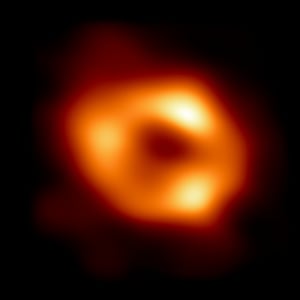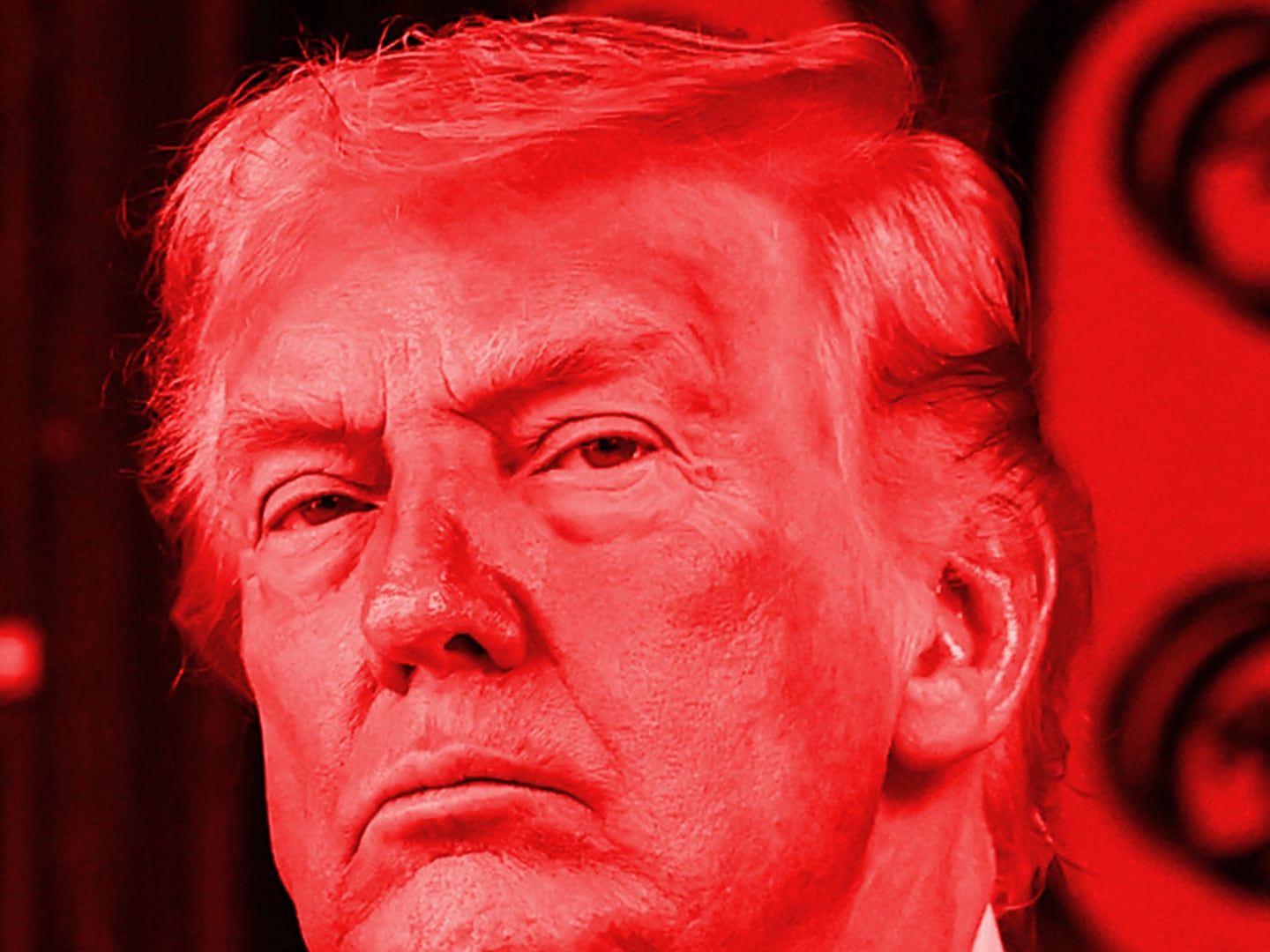The universe is expanding. No one with any expertise in astronomy or physics disagrees with that fact.
Likewise, nobody really disagrees that, at some point many billions of years in the future, the universe is going to expand too far—and run out of energy for further expansion. At that point, something has to change. That’s where the disagreement begins.
There’s a new wrinkle in that cosmological argument, and it’s a doozy. According to a new study from cosmologists Daniela Pérez and Gustavo Romero, both from the Instituto Argentino de Radioastronomía, the universe has been repeatedly expanding and contracting, and big black holes are some of the only things that have survived these endless cycles of destruction and renewal. These cycles are part of what cosmologists call a possible “cosmological bounce.”
A mathematical model of a theoretical black hole is the centerpiece of Pérez and Romero’s peer-reviewed study, which was published last month in the science journal Physical Review D.
“Our main result is that the solution represents a dynamical black hole that exists at all epochs of the bouncing cosmological model,” they wrote.
In other words, Pérez and Romero’s black hole survived even when everything around it got wiped out as the universe collapsed on its way to an eventual rebound.
It’s a compelling finding. The question of a black hole’s role in a bouncing universe “is clearly interesting,” Leandros Perivolaropoulos, a physicist at the University of Ioannina in Greece who was not involved with the study, told The Daily Beast, “and this paper may be viewed as an initial attempt to address it.”
But beware: There are a lot of assumptions baked into Pérez and Romero’s argument. It’s possible that, at the moment a universe bounces from contraction to expansion, all the rules that guide our understanding of physics go out the window. We might be trying to fathom the unfathomable.
“General relativity itself breaks down at both the black hole singularity and the cosmological bounce singularity,” Perivolaropoulos said. “Thus any conclusion based on it can not be taken seriously.”
In other words, at the moment the universe collapses to its smallest size right before bouncing back, gravity would stop functioning normally. That’s what we mean by a singularity: an exception to the laws of physics. We have no idea how a black hole would behave when the rules no longer apply.
Pérez and Romero’s methods “have a significant potential for improvement, to put it mildly,” Perivolaropoulos added.
To be clear, the underlying idea that the universe repeatedly expands and contracts is not new. A cosmological bounce is one of several leading theories among cosmologists who study the origin and fate of the universe.
In fact, at least one team of scientists even believes our 13.7-billion-year-old universe is at the end of the most recent expansion phase, and could start contracting again in a hundred million years or so on its way to a fresh bounce in a few billion, or tens of billions, of years.
Alternative theories for ways the universe might end include the universe slowing down and freezing, collapsing in on itself or spinning apart into countless, fragmentary pocket universes. Amid all the options, it’s clear why the cosmological bounce is attracting a lot of interest. It’s an elegant way of explaining some of the weirder things we see all around us in space.
For one, it might help explain why, in a universe that’s mostly uniformly empty, we have these weird, scattered clumps of stuff. Galaxies. Stars. Planets. People. Irregularities in space that are the byproducts of the endless expansion and contraction.
The bounce might also make sense of the biggest black holes. Specifically, the “supermassive” variety that are billions of times more massive than our sun that exert such a powerful gravitational force on the space around them that not even light can escape.
So far we’ve spotted two of these huge black holes using a new global array of radio telescopes called the Event Horizon Telescope. One was observed at the center of our own Milky Way galaxy. The other was spotted at the heart of Messier 87, a galaxy 54 million light-years away.
A black hole contains the closest thing to a singularity—an exception to accepted rules of physics—that we can directly observe with our telescopes. In the dark, impossibly dense heart of a black hole, our understanding of the universe breaks down. Like Perivolaropoulos said.
There’s something special about an object that big and dense. And that something special might help the biggest black holes survive each time the universe bounces and everything else gets compacted into a kind of smooth paste of matter and energy.
Their survival could be key. Maybe, just maybe, it’s no accident that black holes endure, and retain their unique weirdness, when everything around them contracts into homogeneity. Maybe the black holes are one of the reasons why the universe is capable of bouncing back after one of its once-every-30-billion-years-or-so contractions.
According to Pérez and Romero, there are reasons to believe big black holes, still intact after a cosmological bounce, help the universe rebuild by feeding matter back into space and mixing up the newly-expanding matter with their energy.
“If black holes get through the bounce, they can produce perturbations that would give rise to structure and early galaxy formation in the expanding phase,” they wrote. Black holes can act as engines of creation or re-creation, if you will—helping form galaxies, stars and planets in a rebounding galaxy.
It’s an appealing idea. Especially in light of another theory gaining credibility (in parallel with the idea of a cosmological bounce) that there are supermassive black holes at the center of every galaxy. We just haven’t found them all yet.
To be fair, Pérez and Romero aren’t the first cosmologists to explore the relationship between a bouncing universe and big black holes. Bernard Carr and Timothy Clifton from Queen Mary University of London, alongside Alan Coley from Dalhousie University in Canada, have been writing about black holes surviving cosmological bounces for years now. “The mathematics we did suggest it’s possible,” Coley told The Daily Beast.
The difference is that, in the model from Coley and his coauthors, the black holes are embedded in the surrounding structure of the contracting universe rather than being contained inside it. That would make it easier for the black holes to endure even as the stuff inside the universe’s structure collapses in on itself.
In Pérez’s and Romero’s thinking, the black holes are inside the structure. “They’re looking at a slightly different model,” Coley said. In this conception of the bouncing universe, the black holes are even tougher than anyone imagined before–and potentially more important to the universe’s fresh expansion.
If there’s peril in the corner of cosmology that Pérez and Romero share with Coley and his coauthors, it’s that hard data on bouncing universes and enduring supermassive black holes is pretty thin. Our space probes are few and far between. We can see only so far with older telescopes.
To get a better handle on a possible black-hole-assisted cosmological bounce, we need to find more black holes. Especially big ones at the centers of galaxies. We also need better measurements of the background radiation of the universe. A fine reading of the radiation might point to cycles of expansion and contraction.
The good news is, these observations might be possible soon. The new BICEP Array, a suite of four radio telescopes under construction at the South Pole, could give us good radiation readings starting in the next few years. And we can expect more images (and even some movies) of big black holes from the Event Horizon Telescope.
If cosmologists such as Pérez, Romero, and Coley start finding black holes everywhere, and also register the telltale radiation patterns of a bouncing universe, then we might need to start making peace with the idea that everything we can see and imagine is a lot less unique than we previously thought.
In fact, we might be living in the third, hundredth or thousandth version of the universe after repeated bounces, each one fueled in part by ever-bigger black holes.








